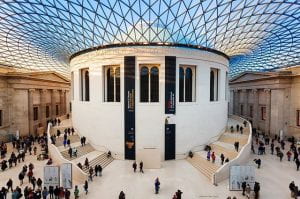Museum of the World: The British Museum’s Response to the Pandemic
The British Museum was founded in 1753 and currently houses the most comprehensive collection of artifacts in existence with almost eight million works, most sourced during the era of the British Empire. Like thousands of museums around the world, they have had to close their doors to the public due to the Coronavirus pandemic. In a brief message on their website, the director of the British Museum, Hartwig Fischer, explains, “During the coming weeks we will bring to our national and international audiences via our website, social media and other channels the many fascinating stories that the objects in the British Museum have to tell.” Fortunately, their website already includes around half of their artifacts, many of which come from their most impressive exhibits including the Rosetta Stone, Egyptian mummies and Parthenon sculptures. This is a great start, but they have come up with a solution even more intriguing to continue sharing their extensive collection with the public, called the Museum of the World. Museum of the World is an interactive virtual tour of the collections of the British Museum. With this feature, one can view artifacts dating back thousands, even millions of years across six continents without leaving their home.
This engaging solution is the British Museum’s way of maintaining the goals of public history, and it’s not only a fitting response to the situation at hand, but a useful tool for the future of museums in general. First of all, the work of the British Museum is strongly collaborative, as it depends on the cooperation of their nine departments, researchers, the owners of artifacts, donors, and patrons. It also caters to a non-academic audience by being simple to navigate and accessible from just about anywhere. This means anyone can explore the history of the world with just a few clicks. The virtual tour also emphasizes how connected the world truly is. It begins with the words “History Connected,” and when viewing an artifact a line appears which connects it to multiple other works included in this feature, which is a convenient way to convey to the public how history is all related. Another benefit of an online collection or virtual tour is that it helps to maintain and protect precious artifacts as the goal of a museum is to not only display history, but preserve it as well.
While the Museum of the World is an innovative response to the pandemic, it isn’t a realistic solution for all museums. I think the British Museum almost has a duty to continue to display their collections, since they have the funds and resources to do so, and many artifacts were collected unethically by British colonizers. They do acknowledge this fact throughout their website, and giving credit to the creators and cultures of the works in their collections is important when doing public history. The biggest critique of using this method for smaller museums is that they usually depend on the revenue they collect from ticket sales, which would be lost if everyone could just view the exhibits online. It would also require a lot of manpower to put together an online experience that could equate to the quality of visiting the museum in person, which many museums simply do not have. All in all, however, the British Museum has put their resources and funds into providing a high quality online experience which can revolutionize the way we consume history from now on. Other major museums should look to the British Museum as an example of how to navigate turbulent times such as this.
